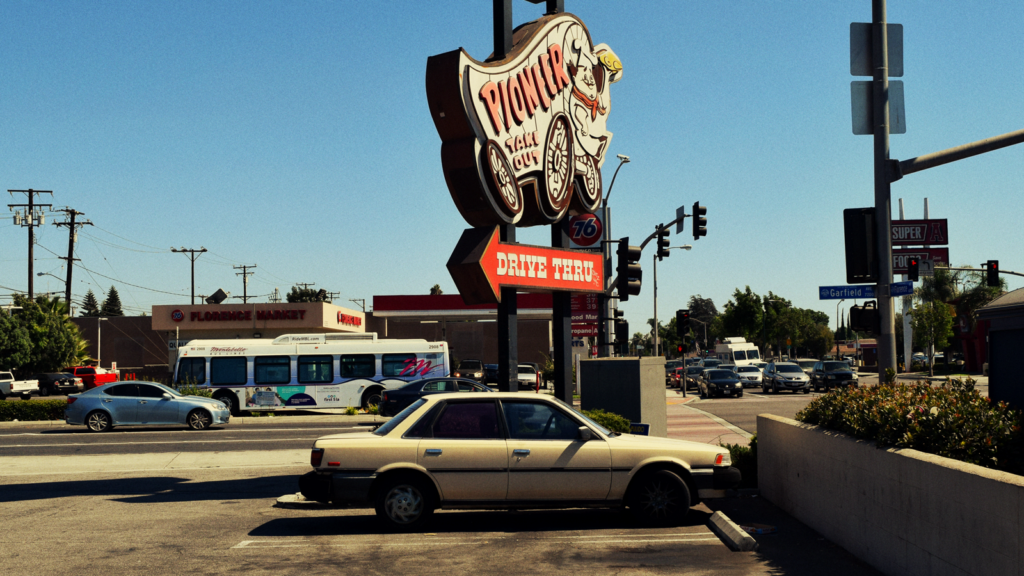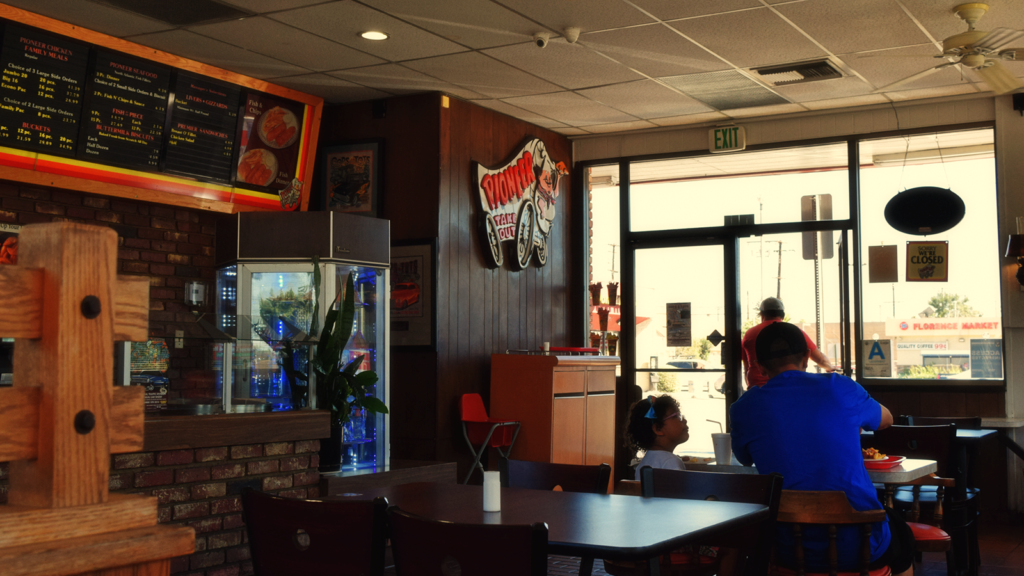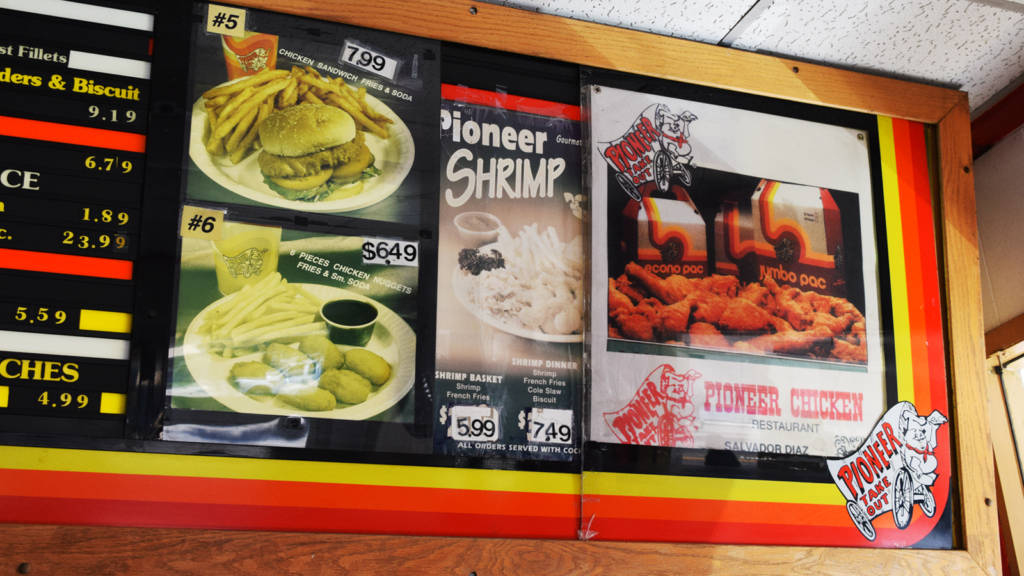
“We’re going to Malaysia!” my cousin Brett yelled on the phone. No, I said. Yes, he replied. Why, I asked. “Because you can still go to fuckin’ Kenny Rogers Roasters there. We’re going to Malaysia and I’m eating that chicken. You owe me.” I hung up on him. Or maybe he hung up on me. One of us always hangs up on the other.
I figured he was just lying to me. There’s no way the chicken chain founded by country legend Kenny Rogers still exists, but I Googled it anyway, because sometimes my cousin tells whatever you call a not-lie. And damn it, he was right. Kenny Rogers Roasters is a big deal in Malaysia. It is totally gone in America — the last one was in San Bernardino County and it closed in 2011— but there are tons of them in Malaysia. My cousin had no intention of going to Malaysia, of course. He was just entertaining a deranged fantasy about how he would piss his money away if he were rich. But the discovery that this chain I had almost completely forgotten had a second life somewhere fascinated me. So down the rabbit hole I went, investigating the ghosts of lesser-known American fast food chains and where and whether you could still find them.
There was Arthur Treacher’s, a 1970s fish and chips chain (the first in America),started by an actor from Mary Poppins. Three survive on Long Island and four are scattered around Ohio. There were the McDonald’s franchises that still sold the McPizza, one in Ohio and one in West Virginia, until corporate made them stop in 2017 (took too long to cook). There was the last Howard Johnson’s restaurant in upstate New York, recently closed because the owner was a sexual predator. There was Wimpy, a pre-World War II burger joint that no longer exists in America but thrives in South Africa. Then, there was Pioneer Chicken, a homegrown fried chicken chain endorsed by O.J. Simpson and Kareem Abdul-Jabbar, that once boasted 270 locations.
Holy Lord, it’s still around.
Why did nobody in Los Angeles ever tell me this?
The first thing I learned from Googling was that Pioneer Chicken is all over the place in Indonesia — just look for the outline of Pioneer Pete’s iconic chuck wagon. It’s called California Fried Chicken there, and it was founded by a group of Indonesian guys who got hooked on Pioneer while in college at USC and wanted to bring it home.
Indonesia is where Pioneer Chicken still soldiers on, 8,000 miles from where it started. The more important thing I learned is that there are two Pioneer Chickens left in Los Angeles, each stubbornly surviving for decades longer than all others. One is in Boyle Heights and the other’s in Bell Gardens. I made it my mission to see both.
Los Angeles is the capital of fast food. This is where it all started. That whole bit about the car and speed-obsessed megalopolis that needed everything fast. Los Angeles is why we have McDonald’s. It’s why Bob’s Big Boy in Toluca Lake is a historical landmark. It’s why there’s still a preserved first-generation McDonald’s in Downey with ol’ Speedee the Chef staring down at you, trapped in a world he no longer understands. Pioneer Chicken, in its day, was just as significant, so why have these other places been preserved while Pioneer falls into obscurity?
Founded in 1962 in Echo Park, Pioneer Chicken was one of several fried chicken chains that were once ubiquitous in L.A. It peaked in the late 1970s, when there were hundreds of locations throughout California, many of them in the greater L.A. area. It had the standard fast food chain look: lots of windows, small dining area, a drive-through, and a large sign depicting a chuck wagon driven by a jolly cook named Pioneer Pete. The fried chicken looked orange, it was greasy as hell, and when you bit in, there was a really loud crunch.
You could get Orange Bang there, which is an Orange Julius if it had 20 percent more sugar in it. According to my mom, who ate there all the time, this shit was the kind of bad for you that drives you crazy with desire if you had it routinely and then never again. The sort of thing you’d move heaven and earth to have again, knowing full well it’s not the best, just something that can take you back in time.
You couldn’t live in L.A. between 1970 and 1990 and not see a Pioneer Chicken, which is officially named Pioneer Take-Out after the long-ago-razed Pioneer Market next to the original location off Sunset Boulevard.
I imagine it was difficult back then to not see the many television ads, featuring breaded chicken rotating on a plate against a sinister empty black background, or a mother being bullied by her horrible children, or the smiling face of charismatic pitchman Orenthal James Simpson, famous for being the only NFL running back to rush 2,000 yards in a single season (I also understand he was a pretty good actor).
The ads were awful because all 1970s fast food ads were awful. Yet because of their age, low budget and ephemeral nature, they’ve become otherworldly, as if taking place in purgatory.

But the commercials could only do so much. By 1987, Pioneer was going bankrupt, and in 1993, the parent company for Popeyes, a national fried chicken chain that by all accounts was nothing like Pioneer, purchased the ailing company, converting most of the remaining Pioneers into Popeyes. The loss was mourned a bit by the press and then life went on, but part of the city’s fast-food identity was lost.
In a common, ambient way, Pioneer Chicken was central to the Los Angeles experience, the myth history of the town. It was everywhere, like orange street lights or jacaranda trees, a fixture of the landscape. And then, suddenly, it wasn’t.
Aside from the two remaining locations, Pioneer lives on largely as an idiosyncratic and flawless lyric in the Warren Zevon song “Carmelita.” It was a banal little detail about a heroin addict strung out on the outskirts of Los Angeles, going to meet his dealer by the Pioneer Chicken on Alvarado Street. Something about it, something about how despair can be so boring and common, captured a sliver of the California experience that grabbed my soul.
When I saw Dwight Yoakam at the Hollywood Palladium last year, he busted out a song he almost never plays — “Carmelita,” by Warren Zevon. When he sang, “He hangs out down on Alvarado Street, by the Pioneer Chicken stand,” all the old L.A. punkers cheered.
The first thing I saw when I walked towards the front door of the Pioneer in Boyle Heights was the advertisement on the window.
I narrowed my eyes in disbelief. All the pictures in the ad were from 1979 at the latest.
Dark red, orange and yellow. The colors of 1970s California. It was advertising two gloriously outdated specials, the “Econo Pac” and the “Jumbo Pac.” The photo was of a plate of orange chicken against that same sinister background.The inside feels like a genuine time capsule. Not like a boomer “time capsule” where your diner has that stupid painting of Humphrey Bogart hanging out with Marilyn Monroe and James Dean, but a real one, the kind that makes you feel dislocated in rapidly changing Los Angeles. It was dusty. Ragged. Faded by the sun.
All the fixtures are original, and you get the sense that when the fixtures break, that’ll be the end, like Willie Nelson’s guitar.
I ordered a leg and a thigh and sat down at a table. Not gonna lie, the chicken kicks ass. It ain’t Roscoe’s, but the crunchy breading is bizarrely satisfying, and you can taste the grease killing you slowly, which is what makes chicken delicious. The secret is in the texture, which is unlike other chicken chains, more fit for fish and chips than quarter birds. It’s singular and, unlike Kentucky Fried Chicken, not shitty.
I resolved to go to the one in Bell Gardens the following weekend, because this one didn’t have Orange Bang.
The Pioneer in Bell Gardens is nicer, cleaner and properly bustling. The drive through was always busy on my visit, and people were making big orders. A dad was eating inside with his daughter. I got more chicken, realized I’ll probably eat there a couple times a year until it closes, and took a sip of Orange Bang. I remembered I don’t like sugary things that kill me, just greasy things that kill me, and threw it away. The experience was magical.

Los Angeles may not be an ephemeral city, but it’s certainly the capital of ephemera. It’s terrible at holding on to its history, and punitive rent prices make it difficult to achieve any sense of consistency. Local institutions are routinely going out of business, and there’s always a sense that the places you like the most could just die out of nowhere one day, crushed under the uncaring boot of late capitalism. Pioneer Chicken is an endangered fast-food species and deserves our love and preservation.
It’s a window into the Los Angeles of the 1970s, of The Rockford Files, a Los Angeles that’s long been going, going, gone. Pioneer Chicken should be preserved as a historical landmark like Bob’s Big Boy, not razed and replaced, like Du-par’s in Studio City. In October, Quentin Tarantino was in Toluca Lake shooting Once Upon a Time in Hollywood — which is set during the Manson murders — and his crew erected a replica of the iconic Pioneer Chicken sign.
I saw a couple in their 50s walk by, and the husband smiled, pointed up, and said to his wife, “God, I wish Pioneer was still around.”
It’s time to let people know that it is.